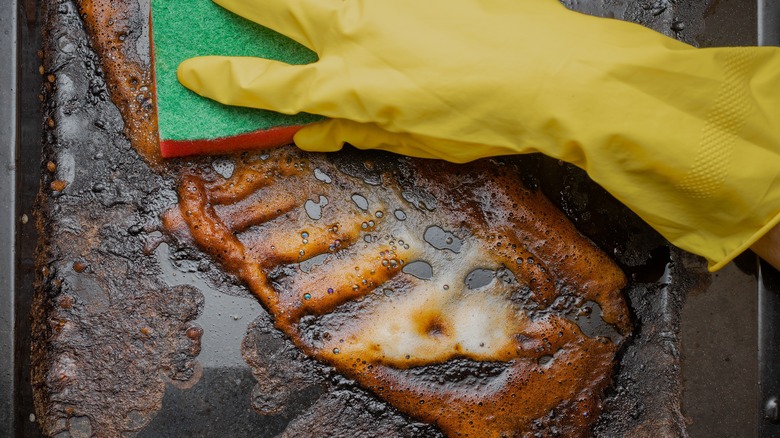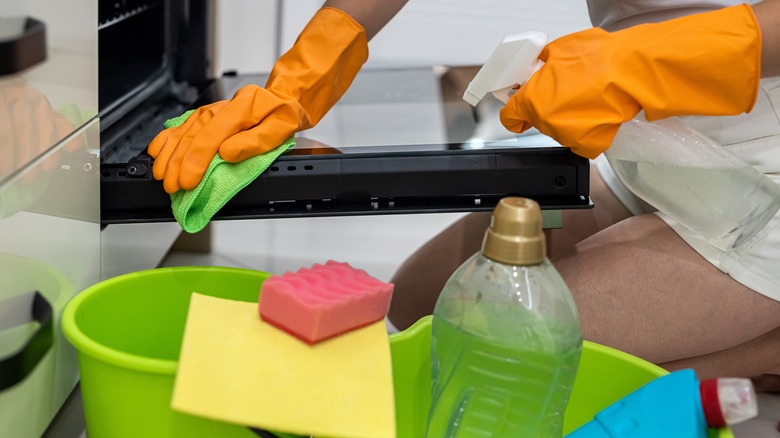This Handy Product Is The Secret To A Spotlessly Clean Oven
Cooking gooey cheese-filled lasagnas or reheating hearty stews that bubble over can do a number on the bottom of your oven. But there's even stuff splashing around in there that you can't see, microscopic bits of flying tomato sauce and other goodies that just get baked more deeply into the walls and surfaces every time you switch the unit on. If it's been a little while since your last deep clean, a product you probably have that's guaranteed to sparkle the heck out of your electric oven is a bowl of ammonia and a ton of safety precautions.
And those safety precautions are mighty important. You can use ammonia effectively in your home, but it's toxic, especially when handled improperly. Unless you're diluting ammonia with plain old tap water, never mix it with any other chemical, not even the nice, non-toxic ones like distilled white vinegar. Mixing ammonia with enough vinegar creates chlorine gas. Chlorine gas, according to a 2023 study released by StatPearls Publishing, is poisonous to your respiratory system. And Healthline reports that ammonia mixed with bleach creates chloramine gas, which can be fatal. Even when handling ammonia diluted with water, wear gloves, an N95 mask, and eye protection, open the windows, aim a fan to redirect the fumes, and quarantine all pets and family members from the kitchen. If you have a gas oven, the only way to clean it with slightly flammable ammonia is to first switch off the main gas lines and pilot light.
How to clean an electric oven with ammonia
Let your oven warm up to 150 degrees Fahrenheit while you gather your supplies. You'll need a non-metal bowl, so plastic or glass are fine. Pour ½ cup of ammonia into the bowl (which you'll later discard), and get a large, rectangular baking dish or pan to fill with boiling water. Turn the oven off, then place your bowl of ammonia on the top shelf. Then, pull out the bottom shelf, place your pan there, and pour boiling water into it. Close the oven door and come back in 24 hours.
The next day, making sure all pet food and water bowls are in another room, toss out the pan of water on the bottom rack. Scour the oven with a scrubby sponge, moistened with water and soap, to remove the debris. Then, add a two-ounce squirt of unscented dishwashing liquid into about a gallon of warm water and use a different sponge to wash the area again. As a third step, it's a good idea to use paper towels and plain water to swab down the interior, removing all remnants of ammonia and soap. Only use the oven when there's zero ammonia smell left. Toss out the sponges and gloves; you can't reuse them. Run the kitchen tap while discarding ammonia down the sink so it doesn't corrode the pipes. Even with all this firepower, if it's still hard to clean, your oven might be too old and need replacing.

